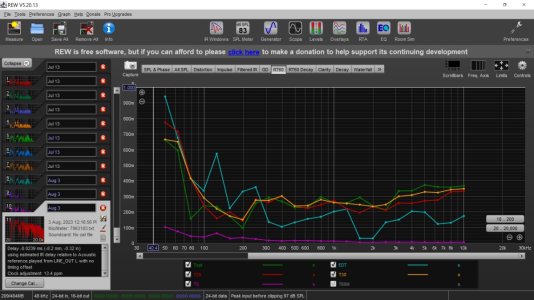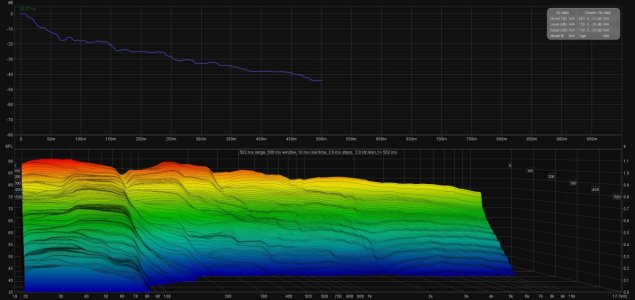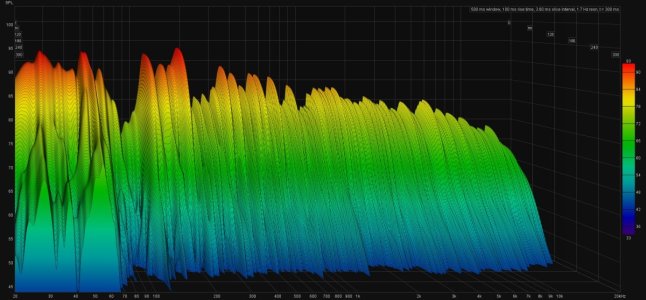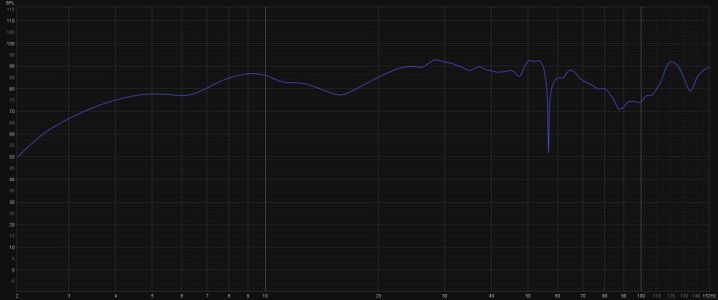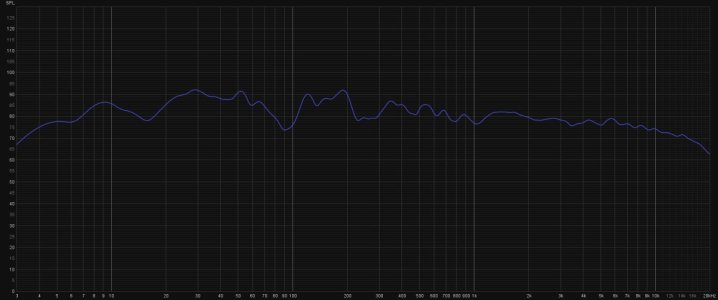Haha...your room is very well behaved.
In both the graphs, check out the 0, 100, 200, 300 & 400 readings on the right side inside these boxes. Now you will see that these are like a rectangle inside a rectangle. These are time domain readings. 100 marks 100 milliseconds after the original note. Similarly 400 marks 400 milli seconds after the original notes. These are basically decay times in hundreds of milli seconds. As you can see, your room has a decay time of below 300 milliseconds from 80hz upwards. Which is just perfect.
Only bass below 80hz has a longer reverberation time of above 500 milliseconds. There is no way to make out how long it persists in this graph. I dont remember how i used to get it, but i remember getting a bar garph with the vertical axis being time in milli seconds and horizontal axis being frequency.
@muralimmreddy had also asked me about it before, but i cant seem to remember how i used to get that screen. Maybe you can tinker a bit and try to find it. There the time domain used to go till 1 second.
Anyways without knowing how long your bass decay is, it is still safe to presume that you can add bass traps in the corners with baffle plates on top. Apart from bass you dont have any severe problems. There is a dip at 80hz ( actually dropping off between 50 to 100 hz ) which might be room induced. And might be difficult to remove with a single sub if you are high passing your speakers. However, if you run your speakers full range and then move the sub around maybe its possible to even out the bass, but I wouldnt bet on it. Usually 2 subs work better at this.
Apart from that without knowing the exact size of the room, and the exact distances speakers to walls, and listener to walls, it is difficult to suggest further without over damping the room.
I had posted this a year back about choosing between diffusion and absorption at first reflection points. Just to end the post with something to mull over for you

when treating first reflection points if you choose to

The purpose of treating our room :
1. To arrange the placement of our speakers and listening position in such a way, that the primary reflections ( first reflections) reach our ears 15 milliseconds after the direct sound from the speakers. Converting 15 milli seconds into distance, give us 5.1 mtrs or 17 ft.
So if "distance from speaker baffle to first reflection point" + "distance from first reflection point to ear" - distance from speaker baffle to listeners ear >17 ft. Then no treatment is required at this first reflection point.
2. However in small rooms, the above required 17 ft will not be possible. So the solution then is to treat the first reflection point, with either absorption or diffusion such that the amplitude of the reflected sound is 10 dB less than the amplitude of the direct sound from the speaker.
3. So absorbtion or diffusion at first reflection point - The recommended ratio between absorption vs diffusion vs reflection ( bare walls or ceiling) is 33%:33%:33%. And that's simply not possible in a domestic environment.
So, the idea is to use equal amounts of both. However, by equal amounts, we mean equal effective area and not equal surface area. The max effeciency of a diffuser is taken as 0. 6 NRC, where as a proper absorber designed for that same frequency can have a NRC of 1.0. Which means, for every 1 SQ.ft of absorption used, we will need 1.66 SQ. Ft of diffusion to have the same effect. Thus, diffusion will take up more surface area than absorption. Thus, absorption is recommended for smaller rooms.
4. 1D or quadratic diffusers - These are the easiest DIY diffusers with plans readily available online. Every quadratic diffuser is designed with a target frequency range in mind. The lower frequency where the diffusion starts is called as its design frequency. Let us take an example of a 5 inch deep quadratic diffuser, whose effective frequency usually starts at 900 hz. The wave length of a 900 hz sound wave is 37 cms. We multiply this by 3, to get 1.11 mtrs.
So we should not have any sound source or listener within a distance of 1.11 mtr from the boundaries of a, quadratic diffuser. A quadratic diffuser is called as a RPG - reflection phase grating. The phase of the diffused wave is offset from the direct sound. And when source or listener are within 3 wave lengths of the diffuser, then the interaction between the direct and reflected sound will cause a tingy note to the treble and will damage imaging of the system.
I have previously read that diffusers have to be placed at a minimum of 8 ft from the listener. Then recently on a different forum, a designer of studio's mentioned that he would never use a quadratic diffuser, unless the listener was at least 10 millisecs from the quadratic diffuser. That translates to 3.4 mtrs or 11.3 ft. But since he was referring to a studio where 100% acoustics are required, I would like to think that for a domestic small room 8 ft might be doable
5. 2D or skyline diffusers - Where room size doesn't permit quadratic diffusers, due to close proximity of speakers or the listener, the skyline diffusers come to the rescue. The skyline diffusers are less effective than quadratic diffusers, but don't come with a minimum distance requirement that I've seen so far. Actually skylines don't diffuse, they apparently only work via staggered reflection. So these can be used without a minimum distance requirement probably. But I would still stick with a minimum of 8 feet distance to the ear in my room, because it is possible at 2 points.
6. Another types of diffusers recommended for small rooms are poly diffusers. These look like a half cylindrical PVC pipe. And the inside can be stuffed with glass wool to absorb bass as well. These poly's don't alter the phase, and thus don't have a minimum recommended distance again.
7. I've saved the best for the last - RPG BAD - Binary amplitude diffusers - these are patented by RPG systems, and haven't seen same being offered by anyone else. These are thin, almost 1 inch thick panels, with a, mathematically calculated cuts in the baffle plate They diffuse from mid frequencies upwards and absorb bass at the same time. So these would be most ideal.
8. The first reflective point treatments, only come after bass treatment. Unless RT60 times below 400 hz are brought down below 0.5 secs. We won't be able to hear the full benefits of the panels at first reflection points.



